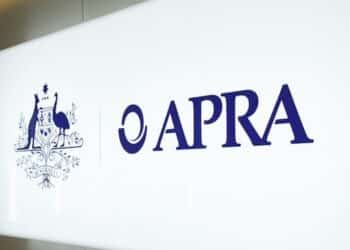Financial Services Minister Stephen Jones delivered the government’s Quality of Advice Review (QAR) response to a small audience of superannuation fund CEOs and senior industry executives on Tuesday, offering another means to meet Australia’s growing advice demand — by welcoming superannuation funds into the industry.
Namely, stream two of the government’s reforms — dubbed the “expanding access to retirement income advice” stream — will see superannuation funds expand their provision of advice to meet the needs of the 5 million Australians, the minister said, that are either at or approaching retirement.
But Colin Williams, Wealth Data founder, has posed an interesting question — do we currently have the right number of advisers to service Australians?
Opting to search the ABS to begin to untangle the question, Mr Williams found that there are just over 12 million persons between 25 and 59, while those at or approaching retirement number 5.24 million aged between 60 and 84, and 530,000 over 85.
“The grand total is close to 18 million persons that are older than 24,” he said.
However, taking into account individuals who seek advice as couples, he reduced this 18 million figure to 12 million individual entities requiring the services of an adviser.
Next, Mr Williams assumed that all individual entities will see an adviser once per year and for simplicity, be charged a flat rate of $1,000 for that advice.
By rounding the number of advisers to 15,800 and considering there are 46 working weeks in a year to service these 12 million entities, he calculated that this would equate to 755.5 entities per adviser, per year, and 16.42 appointments per week, generating $16,425 of revenue per week.
Admitting that these figures seem fairly high, Mr Williams adjusted the initial assumptions further and found that advisers would actually need to meet with approximately 439.8 entities annually, amounting to nearly 12 appointments per week, and resulting in total revenue at just under $12,000 per week.
The revised figures reflect that only 75 per cent of entities aged 60 and above seek advice, while only 50 per cent of those between 25 and 59 do so, with an average of 1.25 appointments per entity per year, allowing for one appointment annually and two every fourth year.
“With a lot of red tape being taken away along with greater automation, this might be doable?”
Adviser numbers dip into negative territory
Also last week, Wealth Data revealed that net adviser gains turned negative for the first time in 2023, with this calendar year to date now marked by an overall loss of five advisers.
Notably, the week to 15 June saw a net loss of 15 advisers, compared to a loss of four the week prior.
Mr Williams noted, however, that at this stage last year, the industry was down 755 advisers, a stark comparison to this year’s figures.
Moreover, he revealed that in the week to 15 June, MWL group lost eight advisers, as reported by the data firm. This was followed by six adviser losses for WT Financial Group, where it appeared that one practice had left and could soon reappear under a new licensee.
Alteris was down by two after a small reshuffle across their licensees, while 17 licensee owners were reported to be down one adviser each including Castleguard Trust (Lifespan), Diverger, Janus, and Insignia, who hired three advisers but lost four.
In more positive news for the industry, 15 licensee owners had net gains of 17 advisers.




I love how they keep saying “look how low the numbers are”, while completely ignore the mass exodus that proceeded it for it to get to this point. While ignoring that it’s the way the industry has been smashed that it’s got to this point, as if this 15,000 is some set barrier that will be the only number possible.
Why isn’t Jones (or this guy) saying, well if we fix and improve the industry there might be 30,000 or 40,000 later to plug the gap? Why is every number “analysis” (aka very bad back of the envelop for 2 minutes max doodling) only using the point we are at now?
Retirees who are NOT HNW can obtain satisfactory advice from Centrelink for free, what does this do to the numbers?
Yes, and take a large amount of FUM away from Industry Super at the same time – which is likely the reason Advisers have been stopped?
When the changes are legislated stop choking Advisers in red tape, more will return and more new entrants will be drawn to the profession.
If you have left, why would come back? Unless you desperately needed to. It sucks!
Existing advisers can meet the needs of Australian consumers. The government and ASIC just need to stop putting up roadblocks.